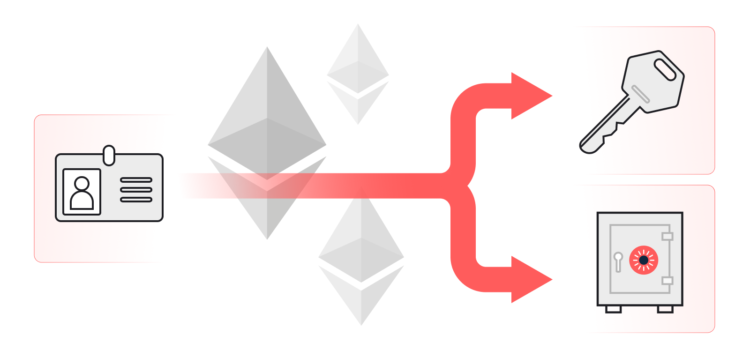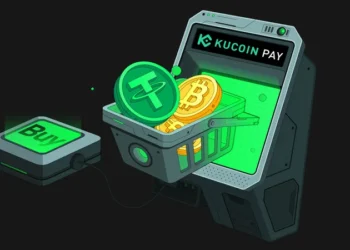What Is Account Abstraction?
Account abstraction is a brilliant idea in the world of Web3 UX (user experience). Instead of using regular wallets, where users must manage keys and pay gas, smart contract wallets allow for more flexible and secure ways to interact with blockchains like Ethereum. One popular method for this is called ERC‑4337, which makes it possible for wallets to include extra features like gasless transactions and recovery options. But even with all these powerful tools, most users still aren’t using them. The big question is: Are people ready to switch to this smarter way of managing digital money?
How Smart Wallets Work

Smart contract wallets operate differently from regular blockchain wallets in that a standard wallet requires you to hold a secret key that allows you to move your funds. However, losing it means losing everything. Smart wallets use special programs that live on the blockchain, and these programs can do things like let you recover your wallet if you lose your password or even combine login methods like biometrics or hardware wallets. That makes wallet security safer, easier and more convenient in ensuring that you don’t lose your funds.
The new way of doing this is through ERC‑4337, an Ethereum standard that enables “account abstraction” without changing how the main blockchain works. This standard wraps your account into a smart contract that can decide how to pay gas fees, who is allowed to confirm transactions, and how to store recovery options.
Why Smart Wallets Are Better
Smart wallets can protect against risks that normal wallets can’t solve, and one example is that if someone were to send you digital tokens, you can set a rule that all tokens go in without additional authorization. You can also ask for a fingerprint to send money or set a daily spending limit. Smart wallets could also help prevent mistakes and protect you if your device gets lost.
Projects like Argent, Gnosis Safe, and Rainbow Burner have already added some of these security features. They let users add trusted friends or set up limits on transactions, and with ERC‑4337, even more wallets can include smart features like gasless transactions and automatic fee payments through relayers.

Using Wallets Without Paying Gas
One big problem in Web3 today is transaction fees, also known as gas fees. These fees can be expensive and confusing for new users. Smart wallets powered by account abstraction can hide gas fees. Instead of the user paying gas directly with ETH, a third-party service (called a relayer) can pay the gas and let the user reimburse them in a different token, or use centralized payment channels. This makes transactions feel more like regular internet apps, where users don’t have to think about hidden fees.
How ERC‑4337 Helps Everyone
Thanks to ERC‑4337, developers can build wallets with smart features right away. This standard has made it much easier for any wallet to include things like:
- Automatic login or payment options
- Preset rules to approve or reject transactions
- Support for many authenticators (like phone apps, biometrics, hardware wallets)
- New ways to pay for gas (including sponsors or subscriptions)
With these features, Web3 apps can become safer and more accessible to people who might be nervous about crypto or decentralized technology.
What Users Think So Far
New data shows that smart wallets are starting to gain traction among advanced users and developers. Many users appreciate the extra Web3 UX improvements, like not needing to manage ETH for gas or worrying about losing keys. Some wallets let users reset their passwords with phone verification or buy gas with a debit card, with features that feel like banking apps.
However, mainstream users still face some challenges:
- They need to understand what account abstraction really means
- Projects need to guide users through setting up smart wallets.
- Relayers, which pay gas for users, need to be reliable and secure.
What’s Holding Web3 Back?
The technology behind account abstraction is ready, but there are still obstacles:
- Wallets need to improve their user interfaces so regular people can understand them
- App developers have to add support for smart wallets in their services.
- Relayer services must be stable, affordable, and trustworthy.
- Users need clear explanations of how these wallets keep them safe.
Until these pieces fall into place, many users will stick with the simpler but riskier standard wallets.
What’s Coming Next?
If account abstraction takes off, we could see big changes in how people use crypto. You could have:
- Apps where you don’t need ETH to get started or pay fees
- Wallets that let you pay with a bank card or stablecoins directly
- Safer mistake checks, like limits on what can be sent or confirmation steps
- Easy account recovery using trusted friends or multi-device systems
Projects like StackUp, Biconomy, and Gas Station Network (GSN) are already testing these ideas. We should watch carefully over the next few months to see how real users handle these new features.
READ MORE: Biconomy Launches New Tool that Uses AI to Manage Cryptocurrency Transactions
Why Account Abstraction is important
Account abstraction isn’t just a technical upgrade; it could change who can access blockchain development, and if everyday people don’t need to understand gas fees or manage private keys, more people can explore decentralized applications. This opens up Web3 for gamers, artists, students, and creators who want to use blockchain without technical headaches.
This kind of innovation is similar to how mobile phones changed the world when people didn’t need SIM cards or technical knowledge to use a phone, causing its adoption to skyrocket. Account abstraction could be that moment for Web3 in removing the technical bottlenecks that could stifle the adoption of crypto.
What the future holds
Account abstraction, ERC‑4337, and smart contract wallets bring serious upgrades to wallet security and Web3 UX, and they do this by adding features like gasless transactions, easier recovery, and flexible authentication. This could make blockchain easy and safe, like using any app on your computer or phone, cutting out layers of complexities and making its use more stress-free
The technology is ready, but mass adoption will need smooth user experiences, good tools, and education. If developers, wallet teams, and relayer services can work together, smart wallets could become the normal way to use Web3. Then, users won’t have to worry about managing private keys, buying gas, or making mistakes, but instead, they can focus on enjoying powerful, secure apps.
So, are users ready for smart wallets? The building blocks are there, the potential is huge, and now it’s a question of when the world will start using them regularly.
Disclaimer: This article is intended solely for informational purposes and should not be considered trading or investment advice. Nothing herein should be construed as financial, legal, or tax advice. Trading or investing in cryptocurrencies carries a considerable risk of financial loss. Always conduct due diligence.
If you want to read more market analyses like this one, visit DeFi Planet and follow us on Twitter, LinkedIn, Facebook, Instagram, and CoinMarketCap Community.
Take control of your crypto portfolio with MARKETS PRO, DeFi Planet’s suite of analytics tools.”





















